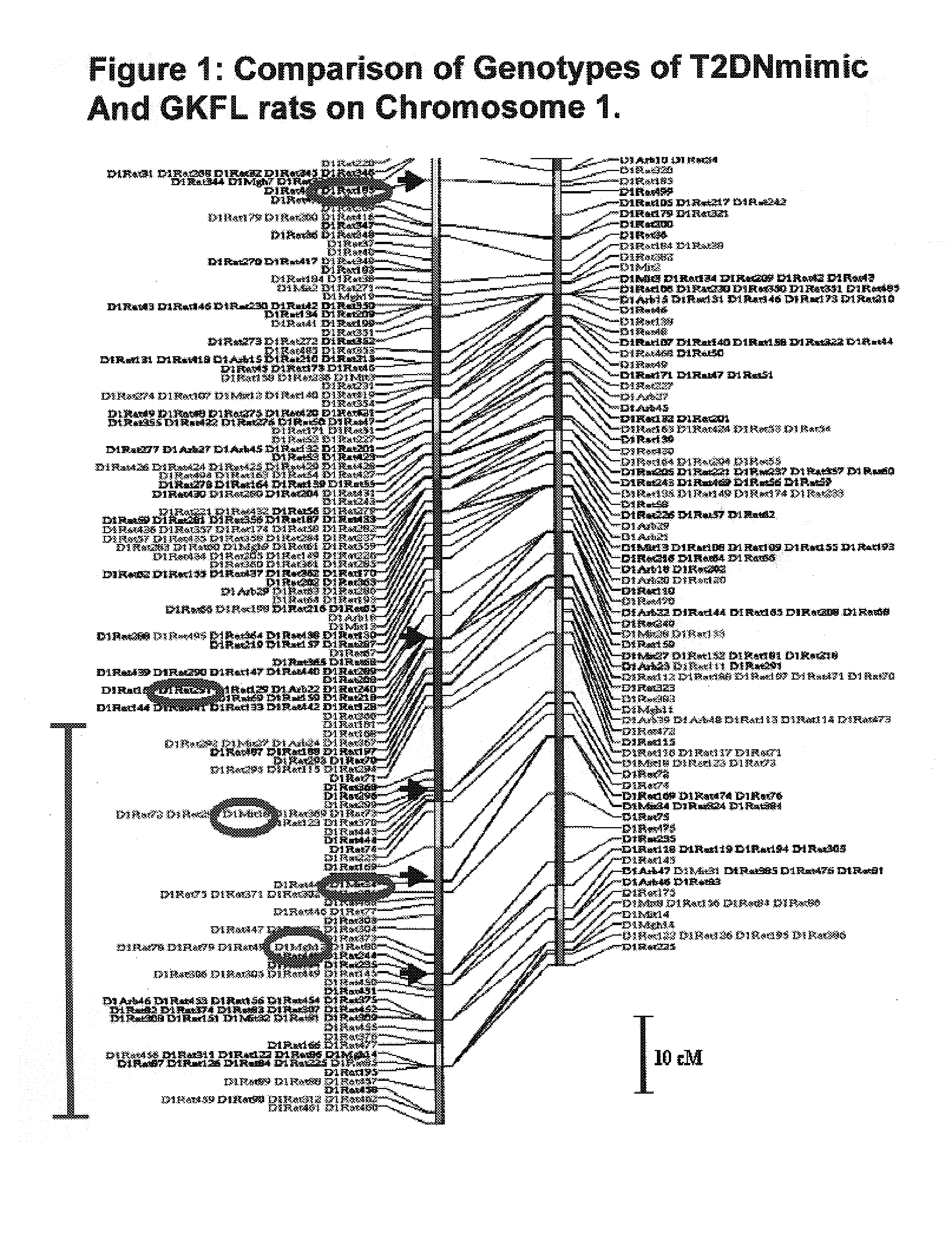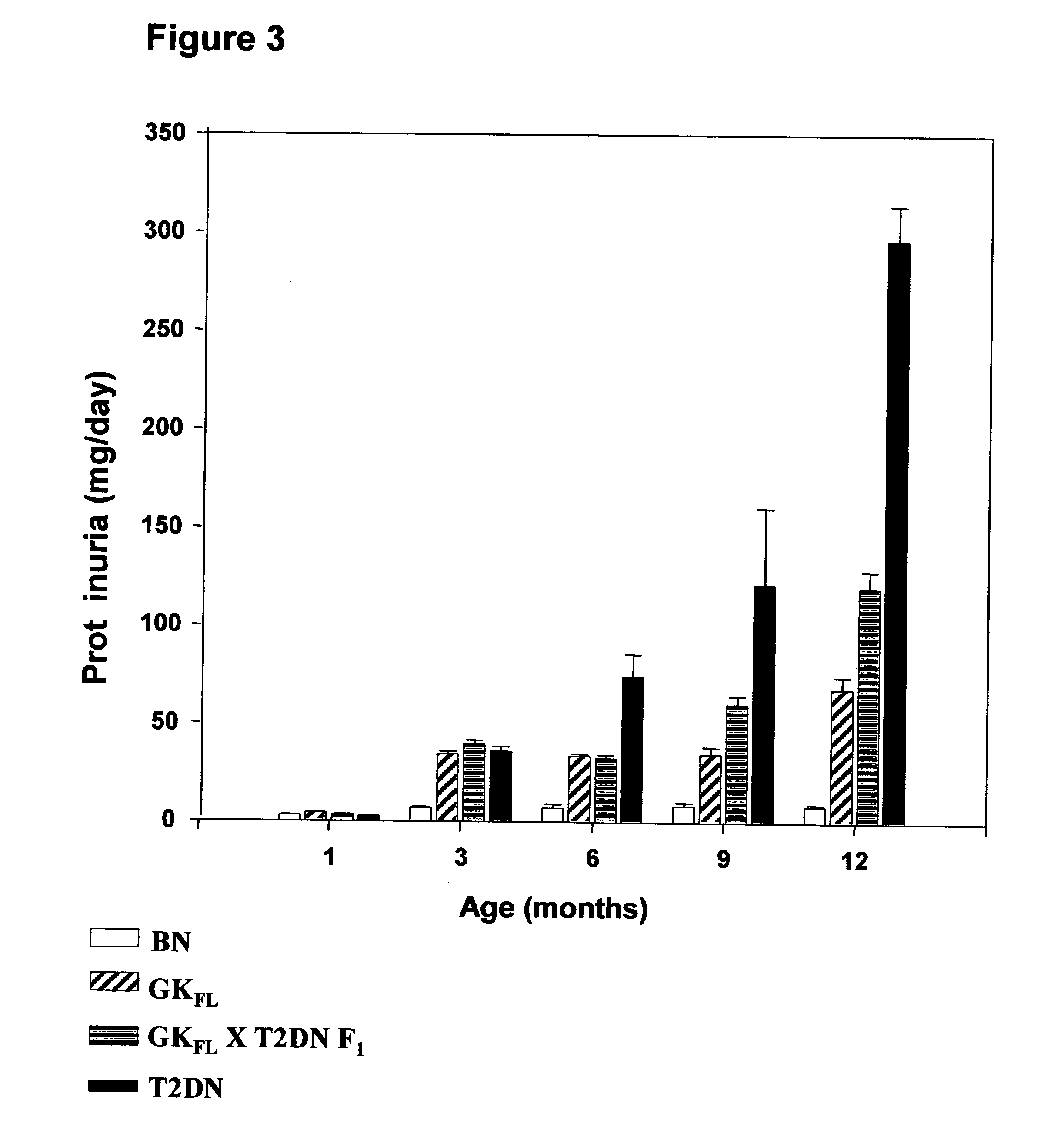Rat model of diabetic nephropathy
a rat model and nephropathy technology, applied in the field of rat model of diabetic nephropathy, can solve the problems of lack of suitable small animal models for diabetic nephropathy, no rodent model of diabetes has been developed that fully recapitulates the chronology, and severely hinders the efforts to identify biological markers predictive efforts
- Summary
- Abstract
- Description
- Claims
- Application Information
AI Technical Summary
Problems solved by technology
Method used
Image
Examples
examples
Materials and Methods
Generation of the T2DN Mimic Strain
[0065]The T2DN mimic strain can be created by introducing the mitochondrial genome and loci on chromosomes 2(D2Rat12), 11 (D11Rat93), 16 (D16Rat15), 19 (D19Rat59), X (DXMit4) and (DXMit42) of Fawn Hooded rats (FHH / EurMcw) that develop renal disease but are not diabetic into the genetic background of a GKSweden strain of rats that develop Type II diabetes but not renal disease. We bred a male GKSweden rat obtained from the Karolinska Institute, Sweden with a female FHH / EurMcw rat (Medical College of Wisconsin) to produce an F1 generation with 1 copy of FHH and 1 copy of GKSweden at all autosomal genes and the mitochondrial genome of FHH rats. Female F1 rats were backcrossed with a male GKSweden rat to create an N2 generation. Female N2 rats with the most GKSweden alleles across the genome and which are heterozygous for D11Rat93, D16Rat15, D19Rat59, D2Rat12, DXMit4 and DXMit42 were selected using whole genome marker assisted sele...
PUM
| Property | Measurement | Unit |
|---|---|---|
| concentration | aaaaa | aaaaa |
| thick | aaaaa | aaaaa |
| concentration | aaaaa | aaaaa |
Abstract
Description
Claims
Application Information
 Login to View More
Login to View More - R&D
- Intellectual Property
- Life Sciences
- Materials
- Tech Scout
- Unparalleled Data Quality
- Higher Quality Content
- 60% Fewer Hallucinations
Browse by: Latest US Patents, China's latest patents, Technical Efficacy Thesaurus, Application Domain, Technology Topic, Popular Technical Reports.
© 2025 PatSnap. All rights reserved.Legal|Privacy policy|Modern Slavery Act Transparency Statement|Sitemap|About US| Contact US: help@patsnap.com



